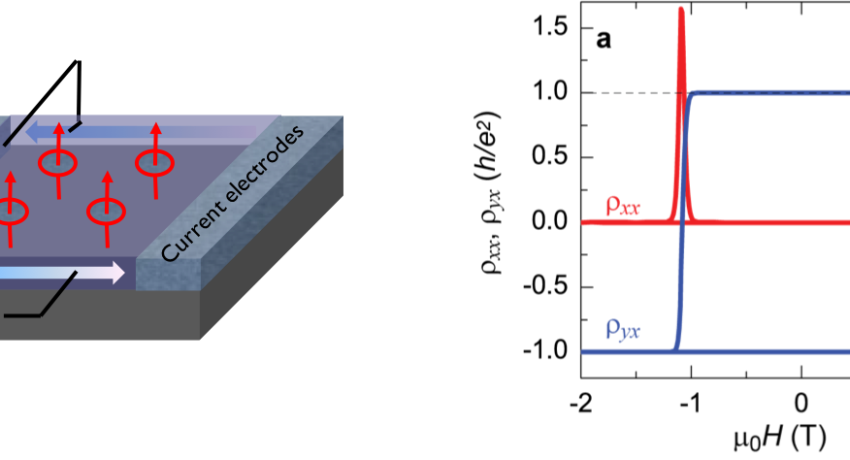Credits/Names: Cui-Zu Chang,1 Weiwei Zhao,2 Duk Y. Kim,2 H. Zhang,3 B. Assaf,4 D. Heiman,4 S-C Zhang,3 Chaoxing Liu,2 Moses H. W. Chan,2 and Jagadeesh S. Moodera1 (Nature Materials 2015, 1MIT, 2Penn State MRSEC, 3Stanford, 4Northeastern)
The discovery of the quantum Hall (QH) effect led to the realization of a topological electronic state with dissipationless currents circulating in one direction along the edge of a two dimensional electron layer under a strong magnetic field. The quantum anomalous Hall (QAH) effect shares a similar physical phenomenon as the QH effect, whereas its physical origin relies on the intrinsic spin-orbit coupling and ferromagnetism. Here we report the experimental observation of the QAH state in V-doped (Bi,Sb)2Te3 films with the zero-field longitudinal resistance down to 0.00013±0.00007h/e2 (~3.35±1.76W), Hall conductance reaching 0.9998±0.0006e2/h and the Hall angle becoming as high as 89.993±0.004º at T=25mK. This realization of robust QAH state in hard FMTI’s is a major step towards dissipationless electronic applications and standard resistor without external fields.
Credits/Names: DMR-14206201: Cui-Zu Chang,1 Weiwei Zhao,2 Duk Y. Kim,2 H. Zhang,3 B. Assaf,4 D. Heiman,4 S-C Zhang,3 Chaoxing Liu,2 Moses H. W. Chan,2 and Jagadeesh S. Moodera1 (Nature Materials 2015, 1MIT, 2Penn State MRSEC, 3Stanford, 4Northeastern)
Download PDF Version: PSU MRSEC DMR1420620 SEED - PDFOptim.pdf
Year of Highlight: 2017
IRG: Seed


